
Concept explainers
To discuss:
Do you agree with the criteria to evaluate a positive outcome in this situation?
Case summary:
The nursing student was assigned to accompany a nurse in the intensive care unit (ICU). They were caring for Mr. G, a middle-aged patient with end-stage liver failure. He had been in the coma for several weeks. Mr. G was found to be overwhelmed with the extent of drains, tubes, and technologies that have been used to care for him. The nursing student found that the nurse and some residents immediately started to assess the technological equipment soon after entering the patient’s room. They don’t seem to have any regard or concern for the patient. They had a conversation about the poor condition of the patient in his direct presence. They didn’t touch the patient and not even attempted an interaction with the patient.
To discuss:
Did the nursing student meet the criteria? Why or why not?
Case summary:
The nursing student was assigned to accompany a nurse in the intensive care unit (ICU). They were caring for Mr. G, a middle-aged patient with end-stage liver failure. He had been in the coma for several weeks. Mr. G was found to be overwhelmed with the extent of drains, tubes, and technologies that have been used to care for him. The nursing student found that the nurse and some residents immediately started to assess the technological equipment soon after entering the patient’s room. They don’t seem to have any regard or concern for the patient. They had a conversation about the poor condition of the patient in his direct presence. They didn’t touch the patient and not even attempted an interaction with the patient.
To discuss:
Should one of the priorities of care for Mr. G have included a review at the bedside of his current treatment and condition therapies with respect for the possibility that the patient might be able to hear the discussion even though he is not able to communicate with the staff?
Case summary:
The nursing student was assigned to accompany a nurse in the intensive care unit (ICU). They were caring for Mr. G, a middle-aged patient with end-stage liver failure. He had been in the coma for several weeks. Mr. G was found to be overwhelmed with the extent of drains, tubes, and technologies that have been used to care for him. The nursing student found that the nurse and some residents immediately started to assess the technological equipment soon after entering the patient’s room. They don’t seem to have any regard or concern for the patient. They had a conversation about the poor condition of the patient in his direct presence. They didn’t touch the patient and not even attempted an interaction with the patient.
To discuss:
What evidence in nursing literature provides guidance for the student when caring for an unresponsive patient?
Case summary:
The nursing student was assigned to accompany a nurse in the intensive care unit (ICU). They were caring for Mr. G, a middle-aged patient with end-stage liver failure. He had been in the coma for several weeks. Mr. G was found to be overwhelmed with the extent of drains, tubes, and technologies that have been used to care for him. The nursing student found that the nurse and some residents immediately started to assess the technological equipment soon after entering the patient’s room. They don’t seem to have any regard or concern for the patient. They had a conversation about the poor condition of the patient in his direct presence. They didn’t touch the patient and not even attempted an interaction with the patient.
Want to see the full answer?
Check out a sample textbook solution
- • Define shock and list types of shock • Discuss pathogenesis of septic shock. • Enumerate the stages of shock. • Define oedema and describe the pathophysiologic mechanisms of oedema with examples.arrow_forwardDiscuss Hypertension under the following headings: Definition Diagnosis Non-pharmacological intervention Drugs Classification Management of a Hypertensive emergencyarrow_forwardExplain how the answer could be 2 or 1.8 WITHOUT changing the questionarrow_forward
- overview of the neurological system, cranial nerves and what part of the body it innervatesarrow_forwarddifferentiate structure and function of the peripheral vascular system. what are the normal and abnormal findings of the peripheral arterioles and peripheral venous systemarrow_forwardAn overview of the skin, hair and nails epidermal appendages normal and abnormal findingsarrow_forward
- differentiate the twelve cranial nerves and how to test themarrow_forwardWhat are the nursing interventions for patients with GI problems ? What is the priority ?arrow_forwardAdult Nutrition Assessment Date of consultation: 3/2/25 Reason for Nutrition Assessment: Mrs. Clover was referred to the RD from the ER physician; patient experiencing weight loss, SOB & Edema Nutrition Assessment Data 69 YOF Ht 157 cm, Wt 53 kg. BMI 21.7 Usual wt 55 kg Heart: slight physiologic murmur; lungs: clear; extremities: 3+ edema to bilateral lower legs; elevated BP, abdomen: soft, nontender, active bowel sounds; neurologic: unremarkable; skin: diminished skin tugor. Biochemical Data BUN 72, Creatinine 4.6, Calcium 7.2, Phosphorus 7.3, glucose 105, BNP 720, Albumin 2.0, Na 125, K 3.3, CI 93. Hgb 11.5, Hct 33.2, ALT 29, AST 36, Alkaline phosphatase 120, other relevant labs pending result. Medications Include inhalers, Cymbalta, Neurontin, Seroquel, and topiramate, prilosec, solumedrol, rocephin, zithromax, NaCl 0.45%+50 MEQ sodium bicarbonate @100 ml/hr. No history of herbal supplements. Since her pneumonia diagnosis several days ago, she has felt too weak to prepare meals, she…arrow_forward
- Assuming you are a community health nurse, choose a community of your own and perform practically the following and report your findings: a. Community Assessment b. Community Diagnosisarrow_forwardDescribe practically how you would use a standing order in the diagnosis and treatment of a 10-year-old primary school pupil with a complaint of haematuria at the end of the urine.arrow_forwardSimple explanations, please. B. Why is an accurate diagnosis of malnutrition important? H. Is BMI a food indicator of malnutrition? I. Can an overweight/obese patient develop malnutrition? Why or why not?arrow_forward
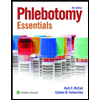 Phlebotomy EssentialsNursingISBN:9781451194524Author:Ruth McCall, Cathee M. Tankersley MT(ASCP)Publisher:JONES+BARTLETT PUBLISHERS, INC.
Phlebotomy EssentialsNursingISBN:9781451194524Author:Ruth McCall, Cathee M. Tankersley MT(ASCP)Publisher:JONES+BARTLETT PUBLISHERS, INC.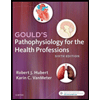 Gould's Pathophysiology for the Health Profession...NursingISBN:9780323414425Author:Robert J Hubert BSPublisher:Saunders
Gould's Pathophysiology for the Health Profession...NursingISBN:9780323414425Author:Robert J Hubert BSPublisher:Saunders Fundamentals Of NursingNursingISBN:9781496362179Author:Taylor, Carol (carol R.), LYNN, Pamela (pamela Barbara), Bartlett, Jennifer L.Publisher:Wolters Kluwer,
Fundamentals Of NursingNursingISBN:9781496362179Author:Taylor, Carol (carol R.), LYNN, Pamela (pamela Barbara), Bartlett, Jennifer L.Publisher:Wolters Kluwer,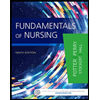 Fundamentals of Nursing, 9eNursingISBN:9780323327404Author:Patricia A. Potter RN MSN PhD FAAN, Anne Griffin Perry RN EdD FAAN, Patricia Stockert RN BSN MS PhD, Amy Hall RN BSN MS PhD CNEPublisher:Elsevier Science
Fundamentals of Nursing, 9eNursingISBN:9780323327404Author:Patricia A. Potter RN MSN PhD FAAN, Anne Griffin Perry RN EdD FAAN, Patricia Stockert RN BSN MS PhD, Amy Hall RN BSN MS PhD CNEPublisher:Elsevier Science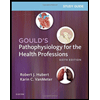 Study Guide for Gould's Pathophysiology for the H...NursingISBN:9780323414142Author:Hubert BS, Robert J; VanMeter PhD, Karin C.Publisher:Saunders
Study Guide for Gould's Pathophysiology for the H...NursingISBN:9780323414142Author:Hubert BS, Robert J; VanMeter PhD, Karin C.Publisher:Saunders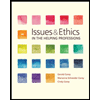 Issues and Ethics in the Helping Professions (Min...NursingISBN:9781337406291Author:Gerald Corey, Marianne Schneider Corey, Cindy CoreyPublisher:Cengage Learning
Issues and Ethics in the Helping Professions (Min...NursingISBN:9781337406291Author:Gerald Corey, Marianne Schneider Corey, Cindy CoreyPublisher:Cengage Learning





